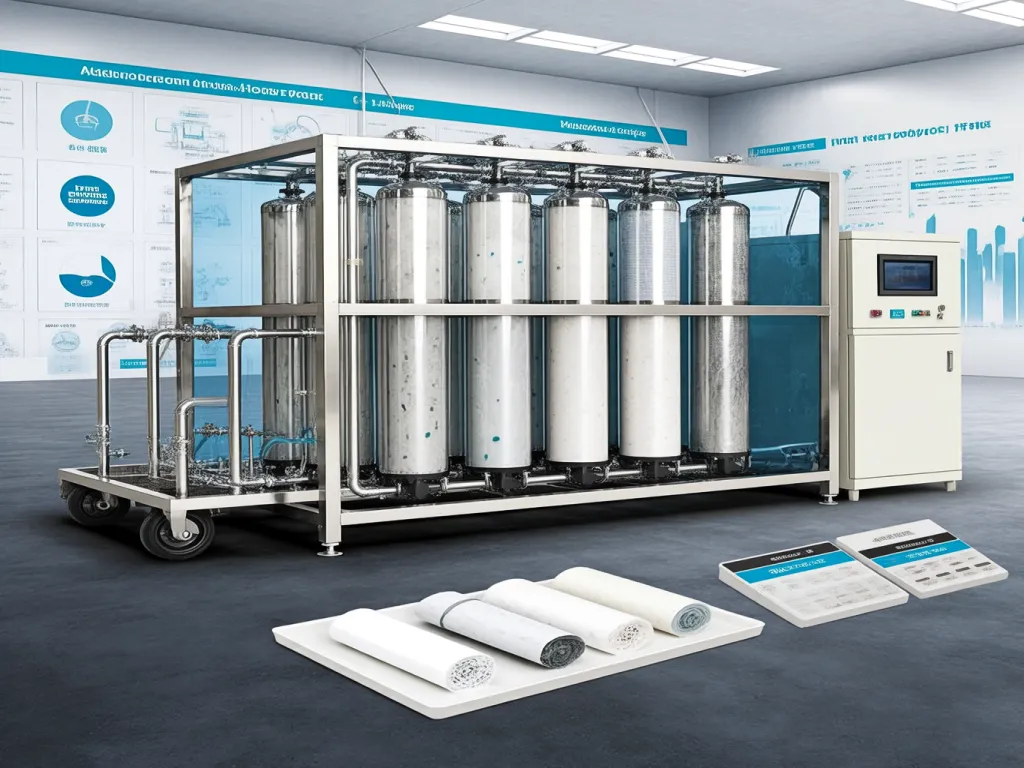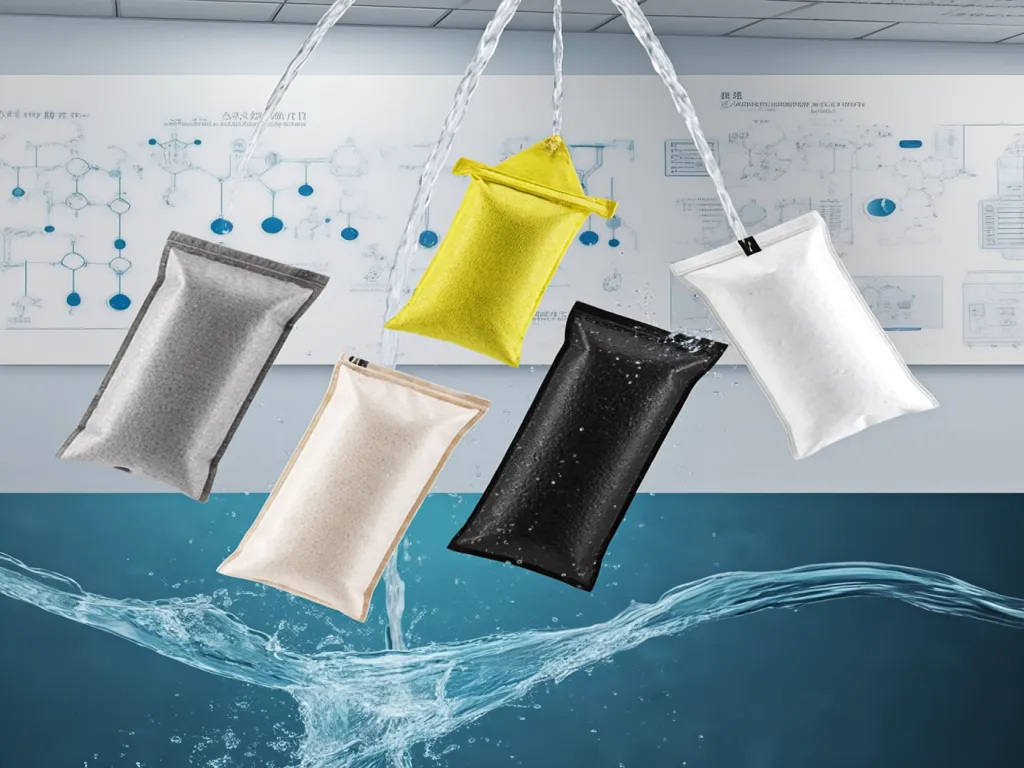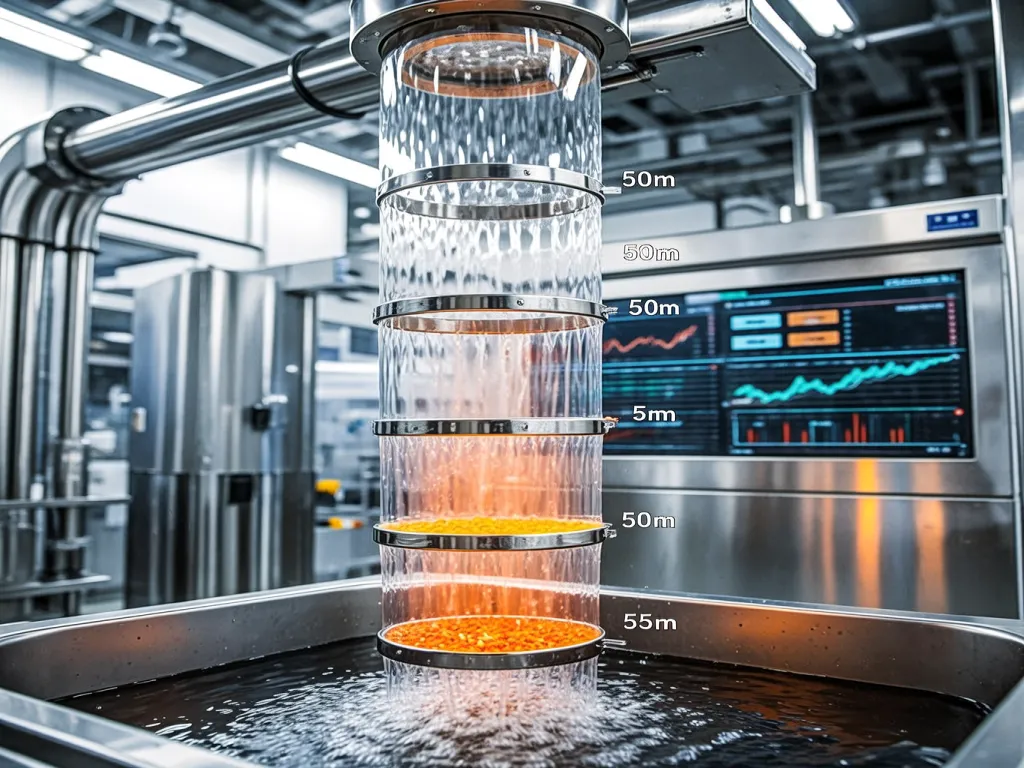Mastering Filter Bags for Water Treatment: Guide

When it comes to water treatment, the unsung hero of efficiency and cost-effectiveness is often the humble filter bag. Whether you’re managing a large-scale industrial facility or optimizing a municipal water system, selecting the right filter bags for water treatment can make or break your operations. But how do you navigate the sea of options—from materials to filtration accuracy and flow rates? Let’s dive into the essentials of choosing the perfect filter bags tailored to your water treatment needs.

Material Selection: Analyzing Differences in Corrosion Resistance, Tensile Strength, and Lifespan Among Filter Bags Made of Polyester, Polypropylene, Nylon, and More
When it comes to choosing the right filter bags for water treatment, the material is a critical factor that can significantly impact performance, durability, and cost-effectiveness. Let’s dive into the most common materials used for filter bags in water treatment: polyester, polypropylene, and nylon. Each of these materials has unique properties that make them suitable for different water conditions and treatment goals. By understanding these differences, you can make an informed decision that ensures optimal performance and longevity for your water treatment system.
Polyester Filter Bags
Polyester is one of the most popular materials for water treatment filter bags, and for good reason. It offers excellent resistance to a wide range of chemicals, making it a versatile choice for various water qualities. Polyester filter bags are particularly effective in environments where the water contains mild acids, alkalis, or other common chemicals found in industrial processes. In terms of tensile strength, polyester is quite robust, which means it can withstand significant pressure without tearing or stretching excessively. This makes polyester filter bags a reliable option for systems that handle high flow rates or require frequent backwashing. When it comes to lifespan, polyester filter bags generally have a long service life, especially if the water quality is well-managed and the bags are properly maintained. However, they may not be the best choice for highly corrosive environments, as prolonged exposure to strong acids or oxidizing agents can degrade the material over time.
Polypropylene Filter Bags
Polypropylene is another widely used material for filter bags in water treatment, known for its exceptional chemical resistance. Unlike polyester, polypropylene can handle stronger acids and alkalis, making it ideal for applications where the water contains aggressive chemicals. This material is also highly resistant to oxidation, which means it won’t break down easily when exposed to chlorine or other oxidizing agents. In terms of tensile strength, polypropylene is slightly less robust than polyester, but it still offers sufficient durability for most water treatment applications. The main advantage of polypropylene filter bags is their ability to perform reliably in harsh chemical environments, which can extend their lifespan compared to other materials. However, polypropylene is more sensitive to UV light, so if your system is exposed to sunlight, you may need to consider additional protection or opt for a different material, such as carbon black fiberglass filter bags which offer enhanced UV resistance.
Nylon Filter Bags
Nylon is a strong and durable material that is often used in water treatment filter bags where high tensile strength is required. Nylon filter bags can withstand significant pressure and mechanical stress, making them suitable for systems that handle large volumes of water or require frequent cleaning. In terms of chemical resistance, nylon is generally good with mild acids and alkalis, but it may not perform as well as polyester or polypropylene in highly corrosive environments. One of the key benefits of nylon is its abrasion resistance, which means it can handle particles or debris in the water without wearing down quickly. This makes nylon filter bags a great choice for applications where the water contains solid contaminants. However, nylon is more prone to hydrolysis, which means it can degrade when exposed to high temperatures or certain chemicals over time. As a result, nylon filter bags may have a shorter lifespan in some environments compared to polyester or polypropylene. For systems requiring even higher durability, consider Nomex filter socks, which offer excellent resistance to both high temperatures and chemical degradation.
Other Materials
In addition to polyester, polypropylene, and nylon, there are other materials used for filter bags in water treatment, such as PTFE (polytetrafluoroethylene) and fiberglass. PTFE is known for its exceptional chemical resistance and can handle virtually any chemical found in water treatment applications. It’s also highly resistant to temperature extremes, making it suitable for both hot and cold water systems. However, PTFE filter bags are more expensive and may not be necessary for all applications. Fiberglass, on the other hand, is often used in high-temperature applications or where extreme chemical resistance is required. It’s incredibly durable but can be brittle, so it’s not always the best choice for systems that require frequent handling or cleaning. For specialized applications, consider wholesale fiberglass filter bags designed for high-performance industrial environments.

Filter Precision Considerations: Impact on Water Treatment and Selection Guide
When it comes to selecting filter bags for water treatment, understanding the role of filtration accuracy—measured in microns—is crucial. This tiny unit of measurement can make or break your water treatment system’s efficiency and effectiveness. So, how exactly does filtration accuracy affect water treatment outcomes, and how can you choose the right precision for your specific needs?
First off, let’s clarify what ‘micron-level filtration’ means. A micron, or micrometer, is one-millionth of a meter. In the context of filter bags, it refers to the size of the particles that the bag can effectively trap. The lower the micron rating, the finer the filtration, meaning smaller particles are captured. This is vital because the success of your water treatment hinges on removing unwanted contaminants, be they suspended solids, microorganisms, or even dissolved substances.
Now, onto the impact of filtration accuracy on water treatment. Imagine you’re dealing with water that has a high concentration of suspended solids, like sand or silt. A filter bag with a coarse micron rating (say, 50 microns) might allow many of these particles to pass through, leading to cloudy water and potential clogging downstream. On the other hand, a finer micron rating (like 5 microns) would capture most of these solids, resulting in clearer water and fewer maintenance issues.
But what if your primary concern is microbial contamination? Here, the choice of filtration accuracy becomes even more critical. Bacteria and viruses are incredibly small, often measuring less than 1 micron in diameter. To effectively intercept these pathogens, you’ll need a filter bag with an extremely fine micron rating, possibly in the sub-micron range. This ensures that even the tiniest microorganisms are trapped, safeguarding your water supply from biological threats.
So, how do you select the right filtration accuracy for your water treatment needs? It all boils down to understanding your specific treatment goals. Are you primarily focused on removing visible suspended solids to improve water clarity? Or is your main concern eliminating invisible microbial contaminants to ensure water safety?
For suspended solids removal, a mid-range micron rating (between 10 and 50 microns) often suffices. This balances effective particle capture with reasonable flow rates, preventing excessive pressure drops across the filter bag. However, if your water source contains a high load of fine particles, you might need to step down to a finer micron rating to achieve the desired clarity.
When it comes to microbial interception, the stakes are higher. Here, you’ll want to opt for the finest micron rating possible, ideally below 1 micron. Some advanced filter bags even incorporate antimicrobial coatings or materials to enhance their pathogen-trapping capabilities.
It’s also worth noting that filtration accuracy isn’t the only factor to consider. The filter bag’s material, construction, and compatibility with your existing water treatment system all play crucial roles. For instance, a highly accurate filter bag made from a material incompatible with your water chemistry might degrade quickly, compromising its effectiveness and lifespan.
In practice, selecting the right filtration accuracy often involves a bit of trial and error. Start by assessing your water quality and treatment objectives. Then, consult with filter bag manufacturers or water treatment experts to identify the most suitable options. Don’t be afraid to ask for samples or conduct pilot tests to evaluate how different micron ratings perform in your specific application.
Remember, the goal is to strike a balance between filtration efficiency, flow rate, and operational cost. A filter bag that’s too fine might clog quickly, requiring frequent replacements and increasing downtime. Conversely, a bag that’s too coarse won’t adequately remove contaminants, leading to subpar water quality and potential health risks.
In conclusion, filtration accuracy is a cornerstone of effective water treatment. By understanding how micron ratings influence particle capture and tailoring your selection to your specific treatment needs, you can optimize your system’s performance and ensure the delivery of clean, safe water. So, the next time you’re in the market for filter bags for water treatment, don’t overlook the importance of choosing the right filtration accuracy—it could make all the difference in your water treatment journey.

Flow Rate Matching Strategy: Principles for Aligning Filter Bag Flow with Water Treatment System Capacity
When it comes to water treatment systems, one of the most critical—yet often overlooked—aspects is the match between filter bag flow rates and the system’s processing capacity. Imagine you’ve installed top-tier filter bags for water treatment, only to find your system struggling with pressure spikes or, worse, filtering less efficiently than expected. The culprit? A mismatch in flow rates. Let’s break down why this alignment matters and how to get it right.
First, let’s clarify what we mean by ‘flow rate.’ In water treatment, flow rate refers to the volume of water passing through the filter bag per unit of time, typically measured in gallons per minute (GPM) or liters per second (L/s). Your water treatment system is designed to handle a specific maximum flow rate—exceed it, and you risk overloading the system. Go too low, and you’re not utilizing the system’s full potential, which can be just as wasteful.
So, how do you ensure your filter bags for water treatment can keep up without causing havoc? Start by understanding your system’s rated capacity. This information is usually available in the system’s manual or from the manufacturer. Once you have that number, you’ll want to select filter bags whose maximum flow rate aligns closely—but doesn’t exceed—your system’s capacity.
Not All Filter Bags Are Created Equal
But here’s where it gets nuanced: not all filter bags are created equal when it comes to flow. Different materials and constructions offer varying flow resistances. For instance, a finer mesh filter bag might provide superior filtration but at the cost of reduced flow rate. Conversely, a coarser mesh allows higher flow but might compromise on particle retention. The key is finding the sweet spot where filtration needs meet flow requirements.
Pressure Considerations
Let’s talk about pressure. When flow rates exceed a filter bag’s capacity, pressure builds up within the system. This increased pressure can lead to several issues: it might force particles through the filter media that would otherwise be caught (known as ‘bypass’), reducing filtration effectiveness. Or, it could cause physical damage to the filter bag, leading to premature failure and increased replacement costs. On the flip side, if the flow rate is too low, sediment can settle within the bag, clogging pores and reducing overall efficiency over time.
Practical Example
Practical example time: Say you’re running a municipal water treatment plant with a system capacity of 500 GPM. You opt for filter bags rated at 600 GPM, thinking ‘more is better.’ Wrong. During peak demand, your system pushes 500 GPM through those bags, but the extra headroom does nothing but add unnecessary pressure. Over months, this constant strain leads to bag ruptures and increased downtime. Now, imagine you’d chosen bags rated at 480 GPM instead. They operate comfortably within the system’s limits, ensuring consistent performance without the risk of overload.
Scaling Up Operations
Another common scenario involves scaling up operations. If you’re expanding your water treatment facility, don’t just add more of the same filter bags. Reassess the entire system’s flow dynamics. Upgrading to higher-capacity bags might seem logical, but only if your pumps and piping can handle the increased flow without bottlenecks. Otherwise, you’re setting yourself up for inefficiencies and potential damage.
Avoiding Pitfalls
So, how do you avoid these pitfalls? Start with a thorough audit of your current system. Measure actual flow rates during different operational phases (idle, peak, maintenance). Compare these against your filter bags’ rated capacities. If discrepancies exist, consider adjusting either the bags or the system components.
And don’t forget about maintenance. Even perfectly matched filter bags can become inefficient if not cleaned or replaced regularly. Sediment buildup reduces flow area, effectively lowering the bag’s capacity. Implement a routine inspection schedule to monitor pressure drops across the filter—a sudden increase could indicate clogging and the need for service.
Conclusion
In conclusion, matching filter bag flow rates to your water treatment system’s capacity isn’t just about numbers; it’s about optimizing performance, extending equipment life, and ensuring consistent water quality. Take the time to understand your system’s needs, choose the right filter bags, and maintain them properly. Your bottom line—and your peace of mind—will thank you.
Choosing the right filter bags for water treatment isn’t just about ticking boxes—it’s about understanding how materials, filtration accuracy, and flow rates interplay to deliver optimal performance. By leveraging this guide, you’re now equipped to make informed decisions that enhance water treatment efficiency while keeping costs in check. Still have questions or need a customized solution? Reach out—our experts are here to help you every step of the way. After all, the journey to perfect water treatment is ongoing, and we’re excited to see where your next filter bag choice takes you.

